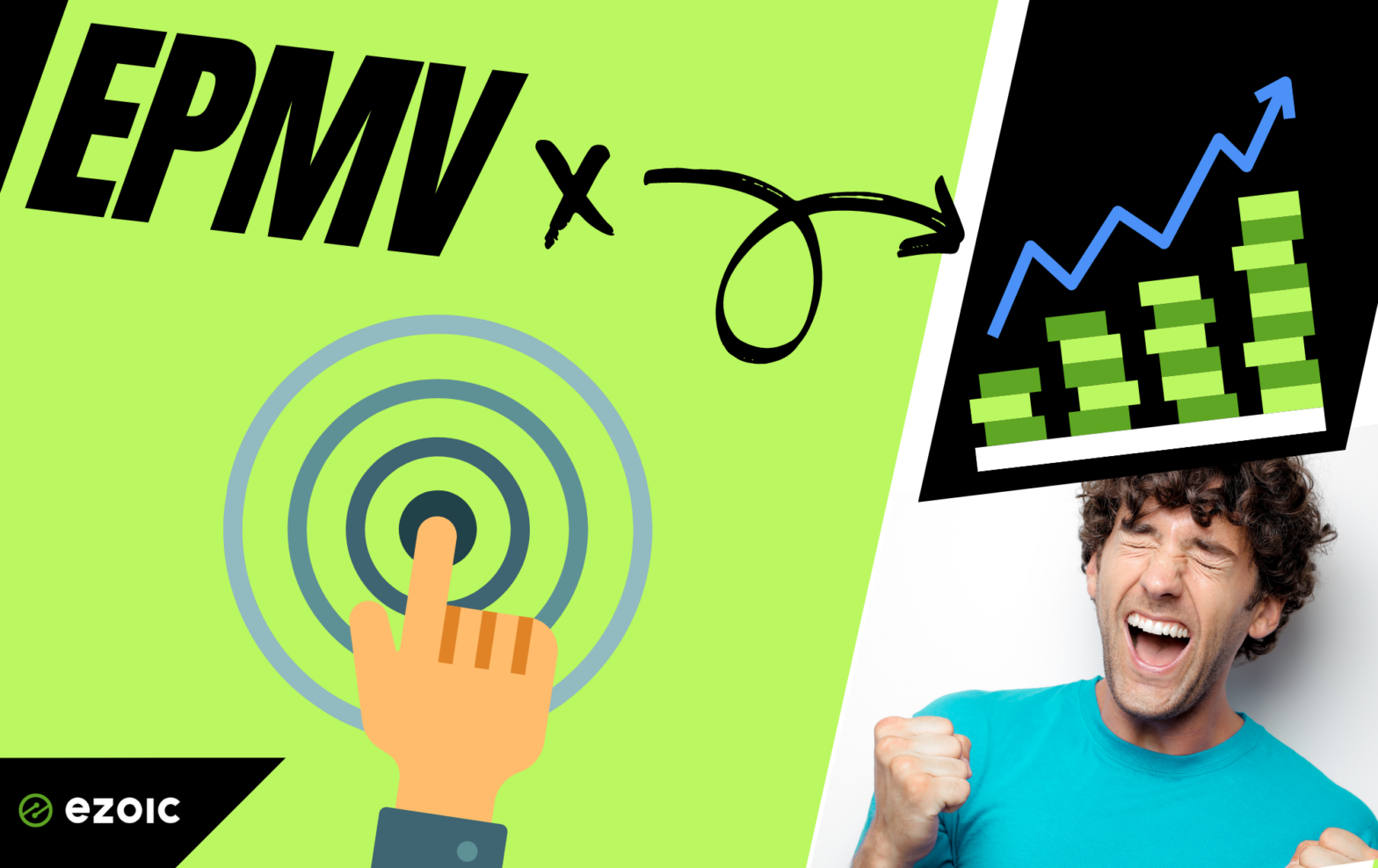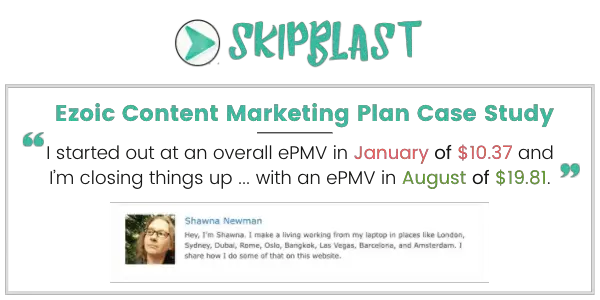NOTE: This article is interactive. If you use Ezoic, you can login and get insights about your site’s EPMV by clicking links and viewing the unique reports available below.
Skip Ahead To Interactive Analysis
Use the links below to skip my examples and instructions and go directly to areas where you can analyze your site’s EPMV.
Note: I recommend not skipping the first time. You’ll probably find or learn something that will make you more money if you do 😉
Start Analysis
Skip ahead where you can login and analyze your site using the links below.
Check Your Reports
Ezoic Users Only: Jump ahead to all links that will show you more about your EPMV.
Common Ezoic Fixes
Ezoic Users Only: Jump ahead to see common issues and how to diagnose and fix them.
– Recommended to view other sections first
I Will Help You Raise Your EPMV
I rarely have the chance to write blogs or content anymore. I miss it. Generally, I think I’m a good writer — or at least a good content creator — but what I miss the most is the art of sending the content out into the world to see how it performs.
Like many, I was often surprised by the results. Uninspired content that didn’t take me much time to create would often perform far better than I would have imagined. Meanwhile, content I was sure would outperform other articles would end up being a total lost cause.
Over the years, I got better at reviewing and understanding my audiences and could rely less and less on data to guide my efforts (I love data, but I prefer to be creative).
My experience is typical among veteran content creators ; however, there’s a major blindspot that I find even the most data-driven publishers are still missing entirely… and they don’t even know it!
“Understanding what impacts a site’s EPMV is just as important as understanding what content is likely to generate traffic, yet EPMV remains a subject of mystery for many publishers.”
It’s extraordinary to me how little is understood about EPMV across all spectrums, sizes, and experience levels of publishers and websites.
Today, I hope to change that.
I think you should read this and checkout my examples below…
If you’re an Ezoic publisher or website owner, I can promise you’ll learn something fascinating about your site below.
I’ll be including links to demonstrations of how to get the info that I think can help you better…
- Understand EPMV changes instantly
- Diagnose the cause of EPMV drops
- Differentiate worldwide EPMV trends from your site’s EPMV
- Increase the EPMV of your website
- BONUS: Ezoic users will see what Ezoic features or settings may influence increase or decreases in their EPMV (definitively)
What should a site’s EPMV be (…a good one)
I’ll give my standard answer … Between $1 and $1,000 would be a “good” EPMV.
“But Tyler, my site is … or my friends site has a …”
I know.
Unfortunately, this is where a lack of knowledge has harmed many publishers and left them guessing rather than taking a more data-driven approach.
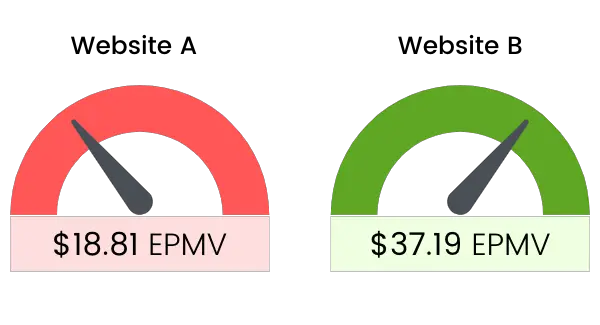
What one website’s avg. EPMV may be has absolutely NOTHING to do with another’s.
“… but Tyler, what about my niche, geography (“geo”) where my visitors come from, or my audience that is coming largely from organic search?”
I understand. These things are important, but probably not as important on their own as you think.
Even if the geo, traffic source, and even subject matter of two sites appear the same, the majority of sites with 2-3 factors like this in common vary as wildly as my answer at the top (some may make a $1 EPMV and others a $1,000 EPMV).
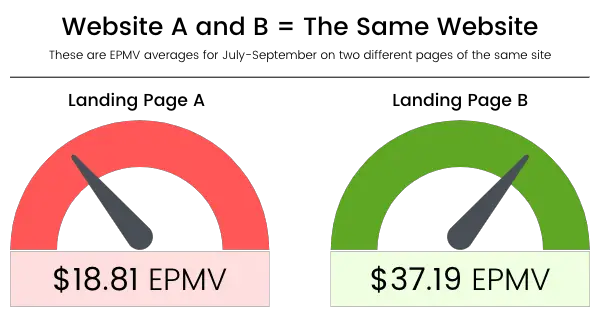
I’m serious.
I see this right now across tens of thousands of sites in the screen to my right as I type this.
Let’s study another example of two growing, successful sites
Both of these sites are on THE EXACT same topic. They both focus on a popular brand of consumer products. Not just the same general niche, literally the exact same brand of consumer products.
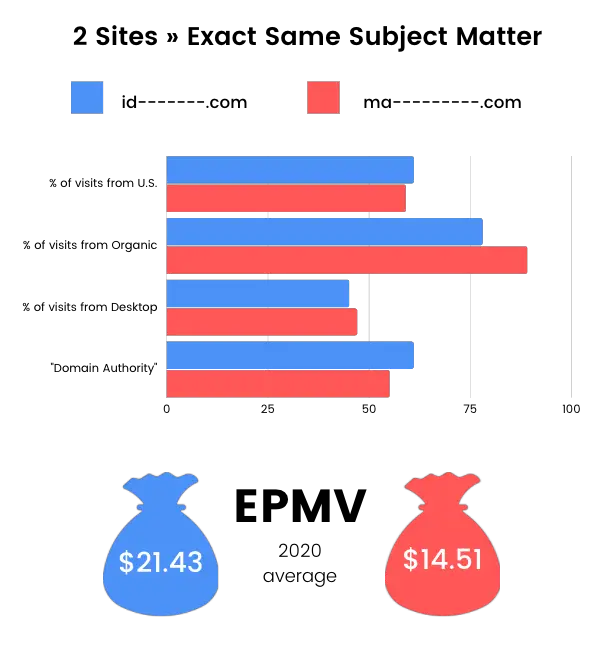
Why the differences?
Both use Ezoic, both have Ezoic Monetization best practices in-place, both are Ezoic Level 3, and both are nearly 10 years old with approximately the same number of monthly visitors.
id——–.com has a 50% higher EPMV than ma———-.com, yet the “conventional wisdom” espoused in many circles as being what defines a site’s EPMV provides no helpful answer (and never will).
Logged Into Ezoic?
View These Stats On Your Site
Neither site is doing anything wrong. One just has has more traffic going to higher earning content.
Content? Yes.
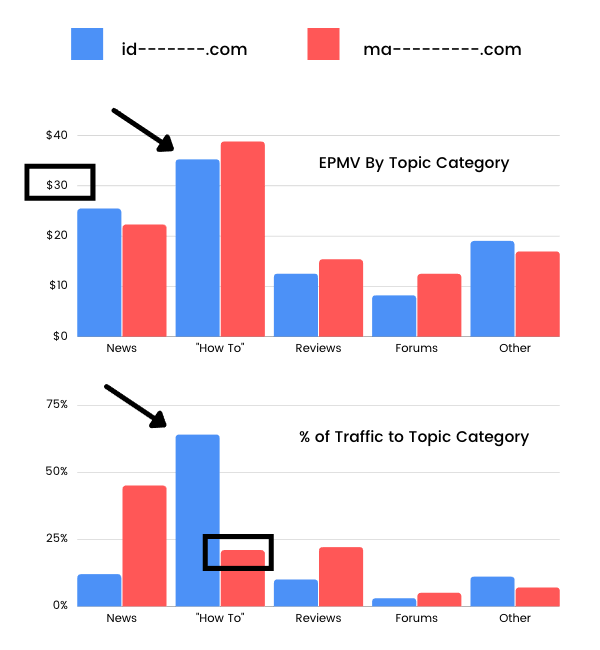
More traffic goes to landing pages with higher session revenue on id——.com than ma———.com.
Logged Into Ezoic? View the data from your site.
The big difference between these two sites is that their average EPMVs are made up of traffic to different topic categories.
Imagine, if both of these site owners sat down together and simply discussed their EPMVs without any of this knowledge how the conversation might go.
Ma———-.com would wonder what they might be doing wrong.
They’ve done nothing wrong and cannot “fix” their EPMV without changing the % of traffic to those respective topics or increasing the EPMV to their other topics (much harder). They made great content. It’s just a for a different type of visitor with different interests and intentions when they’re searching on the web.
It’s safe to assume these sites likely SHARE many of the exact same visitors. Those visitors may just be coming to one site for one type of content and the other site for a separate type of content.
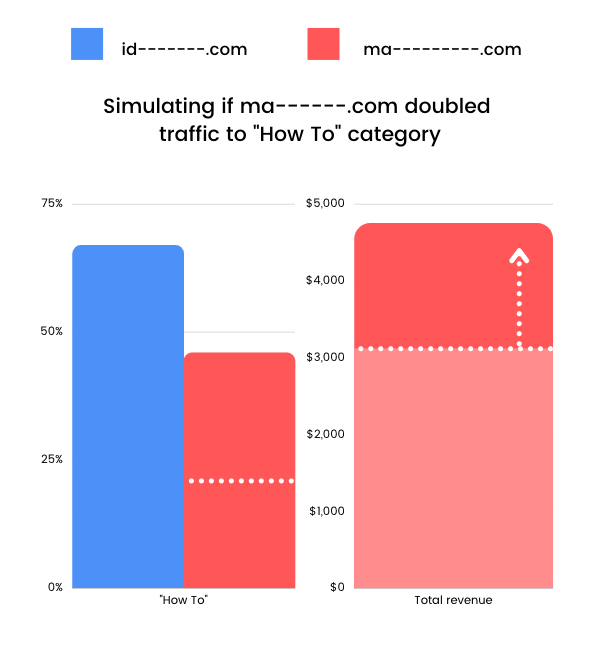
Ma———-.com would still have a lower avg. EPMV if they doubled traffic to their highest earning content category
(which is earning a higher EPMV in that category than id—–.com).
but….they would earn $1,633.57 more average monthly revenue. So, comparing EPMVs wouldn’t make any sense as a strategy in that case; as ma——.com’s average EPMV would still be lower; however, they’d be earning a higher EPMV on “how to” content and making more total revenue overall.
But, why does id——-.com earn less from “how to” content while still finding a way to generate way more traffic to that content category than ma—–.com?
Maybe id——.com has earned the traffic to “how to” content by making better content of this type than ma——.com
Maybe Google ranks id——.com’s “how to” content higher because searchers find it to be more helpful?
…But… why assume when we can know.
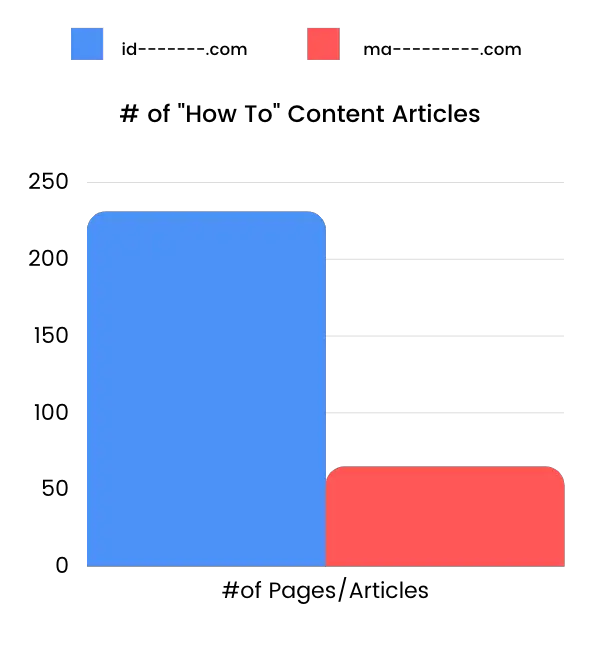
id——.com may in-fact have better “how to” content; however, they’ve created better odds for themselves as well.
I know the owners of id——-.com and they look at Ezoic’s linked Search Console Report to see what queries, ranking positions, and SEO efforts are paying off the most.
Id——–.com created more than double the amount of “how to” content — increasing their chances of having more of that content rank for these types of queries than ma——-.com.
Assuming that ma——–.com may have trouble driving 2x the amount of traffic (w/ the same attributes of the current audiences to those pages), their best option for increasing their avg. EPMV is to create more “how to” types of content for search, monitor performance, and see if this proves correct.
Shawna Norton, an Ezoic Publisher, used this exact information to run her own experiment. The result…?
… a 91% increase in EPMV in just 9 months!
Nearly double the revenue. All because she let data direct her content efforts. The link above allows you to go and read more about what she did.
What changes EPMV?
To say that there are a lot of factors that influence EPMV would be an understatement.
For example, most countries see ad rates — as an industry-wide average — fluctuate by 200%. Meaning depending on the time of year, the average site in any country will see a 3x difference in their EPMV from seasonality alone (depending on the day and month).
That mean’s a site could have a $10 EPMV in January…
… and a $30 EPMV in December with zero changes occurring.
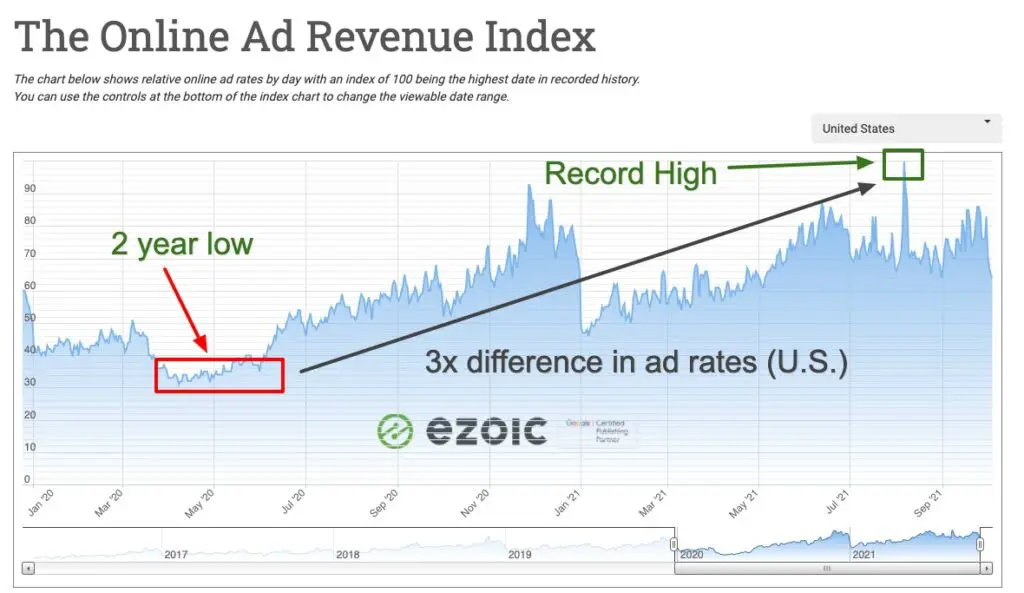
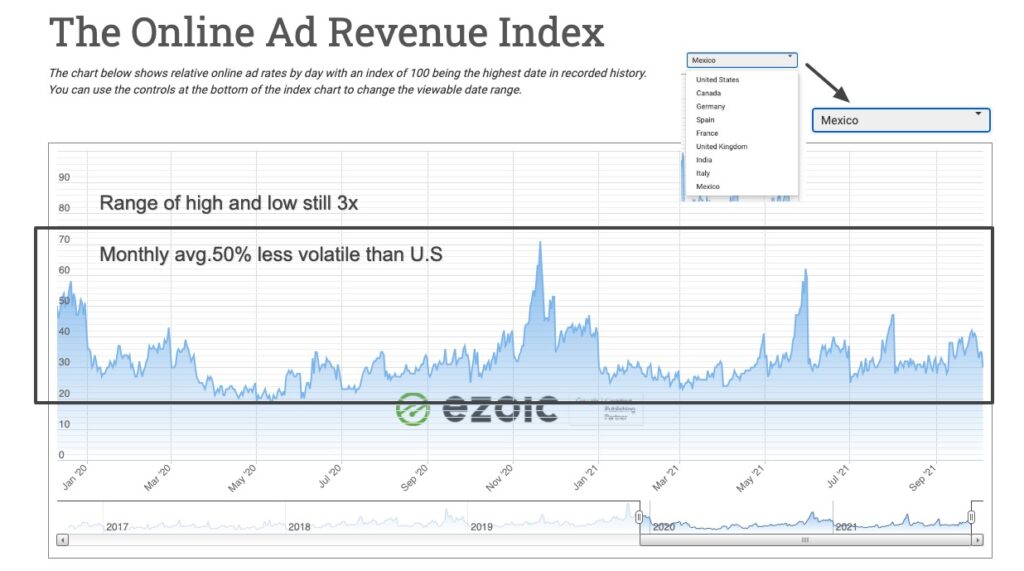
What else influences website EPMV?
Most veteran publishers understand the seasonal impacts of changes in EPMV, but this impact is felt differently across all types of sites and audiences.
So, what else impacts the degree of volatility of a site’s EPMV? We can divide things that impact EPMV into 2 categories.
Things that CAN be controlled:
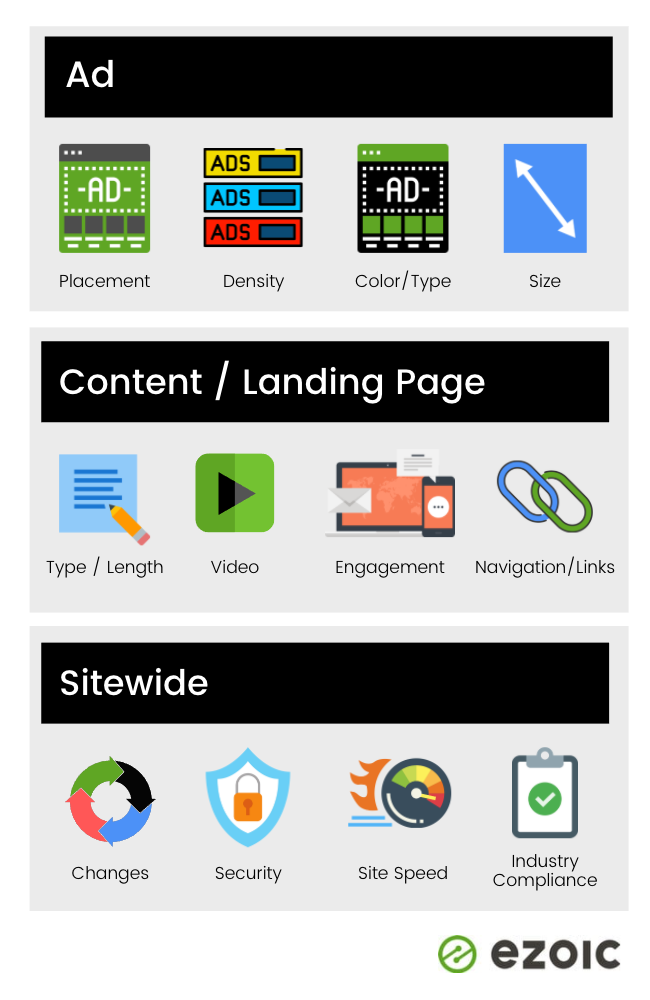
Things that CANNOT be controlled:
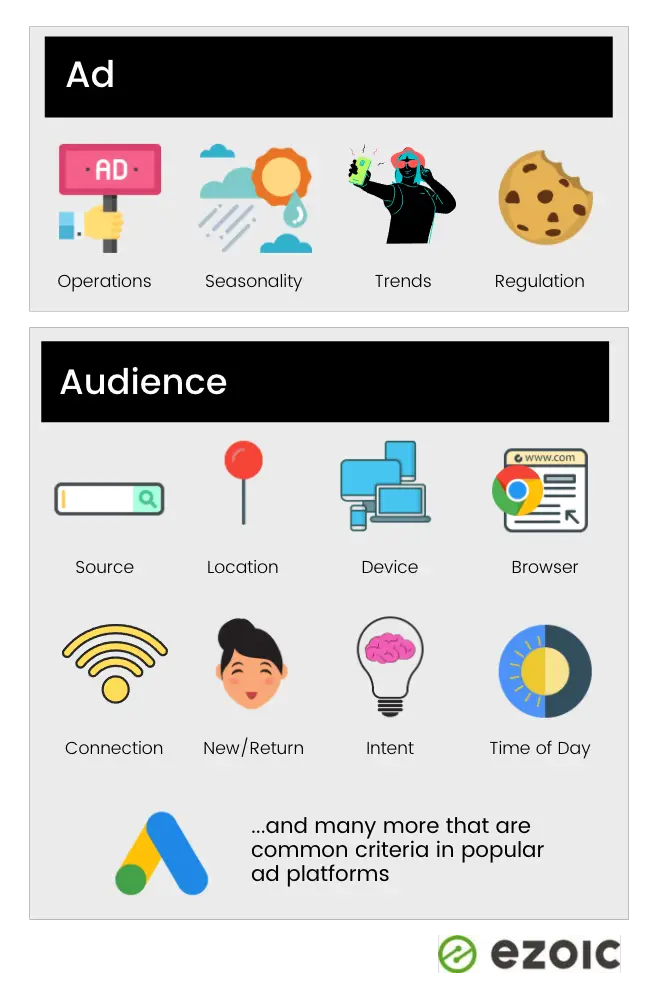
In both of these instances, publishers have the ability to understand the nature of all these variables and can strategize to influence it.
It’s these variables that advertisers are really great at manipulating and using to their advantage to ensure a positive return on their ad spend (ROAS).
Publishers are subject to an asymmetry of data on this front (meaning advertisers have AND USE more data than publishers).
One example of this is that publishers often serve every visitor the exact same ad placements, and do nothing to adapt in the way advertisers do. Luckily, that’s what Ezoic fixes with Ad Tester.
Advertisers adjust for supply and demand, if every visitor on your site sees the same ad locations, sizes, and density… your site is not adjusting for this the way advertisers are.

Advertisers use a mixture of targeting and untold amounts of historical data from exchanges and bidding platforms to automate how they buy ads programmatically (display ad buying).
This means that the individual visitor on a website’s pages, along with the history from every advertiser bid that’s ever happened on that website, affects the bidding for ad placements available on each visitor session (all pageviews across a single visit).
What is impacting website EPMV most?
Each website is different, so it’s important to get this data for every site you own; as they will likely vary quite a bit.
Here’s the analysis EVERY PUBLISHER should be doing. If you’re an Ezoic user, I have included links that will take you to these reports below inside of your Ezoic’s Big Data Analytics (free for Ezoic users).
Ezoic websites can use this as a guide for the tools below.
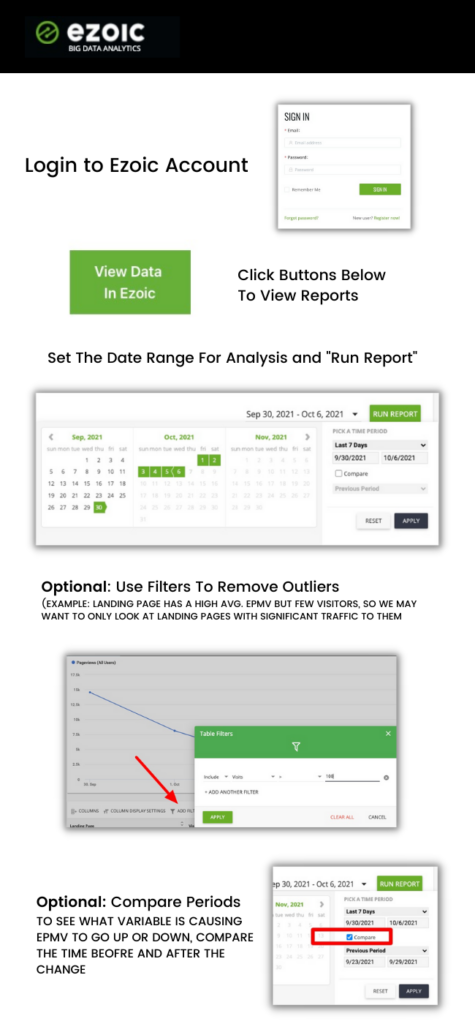
Understanding EPMV Changes W/ Examples
Comparing one month, or a period of days, before and after an EPMV change will show sites exactly what is driving the difference.
Example: EPMV goes from $20 one month to $15 the next
Why?
Comparing periods of time before and after a change in EPMV allows you to see the same number of says before and after by a single variable.
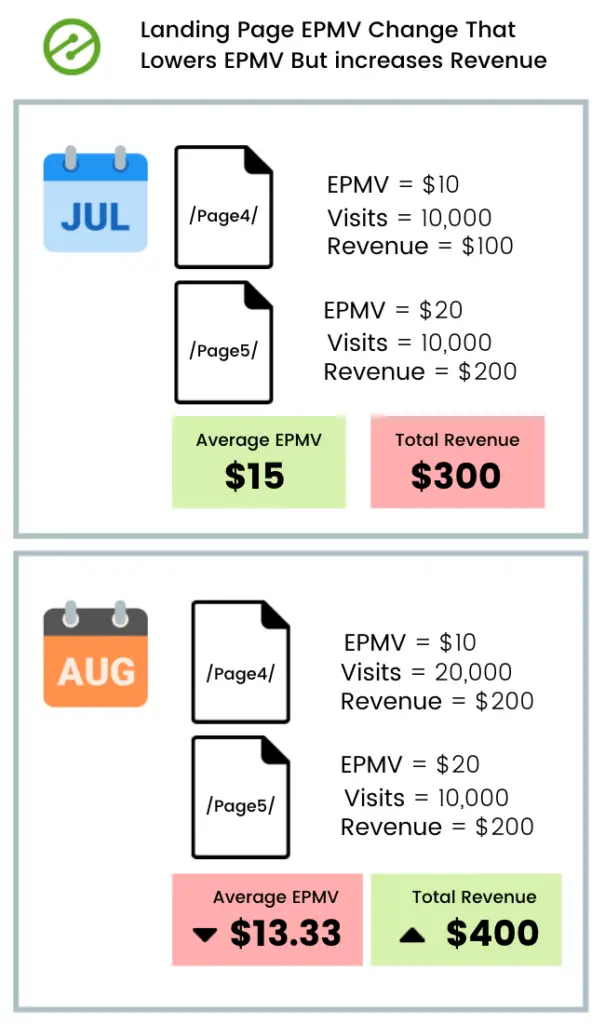
Example of EPMV Going Down (But It’s A Good Thing): Landing page URL, /page4/, has a lower EPMV than URL, /page5/, but in the most recent month, more traffic has gone to landing page /page4/ than /page5/. This may drive avg. EPMV down, but nothing has changed and if traffic stayed the same for /page5/ then total revenue will have only gone up.
While ad rate seasonality — shown in the Ad Revenue Index — is often a major factor, it should generally be looked at last if you think there’s an abnormal change in EPMV.
Factors: EMPV Analysis
Geo-location
See EPMV different across different countries
New vs. Return Visitors
See which visitor type has higher EPMV
Landing Page EPMV
The pages high-earning visits start with
EPMV By Page Word Count
See the impact of a page’s word count
Visitor Device EPMV
Learn EPMV by mobile, desktop, and more
Google Search Term/Query EPMV
EPMV of queries, CTR, and ranking positions
Traffic Source/Medium EPMV
Traffic sources that yield the highest EPMV
Author / Writer EPMV
Learn the EPMV of article authors/writers
(click here if not “not set”)
Category/Subject EPMV
View EPMVs of different topic categories
(click here if not “not set”)
Content Age EPMV
See the EPMV of pages by age
Page RPM of Slowest Pages
See EPMV of your slowest pages
Page RPM By Request Time (speed)
See affect of request times on EPMV
Cache Hit Rate and Caching EPMV
See how caching impacts EPMV
Visitor Browser EPMV
Learn EPMV by browsers used by visitors
EPMV of Different Frameworks
How AMP and other frameworks perform
Highest EPMV By Referral
Learn who is referring high-EPMV visitors
EPMV By Page UX
See how objective UX impacts EPMV by page
Content Viewed % EPMV
EPMV of % of page content viewed by visitors
Time of Day
The impact of time of day on EPMV
EPMV of Pages With Video
Which pages see highest EPMV from video
Finding/saving the data that matters
For Ezoic users, after looking at some of these reports, you may find that some filters are necessary to configure the data to make it more helpful.
This can be done in Google Analytics with Segments or filter rules; albeit the revenue information may not be available unless your full-suite of monetization sources are connected.
Example of making the data more helpful:
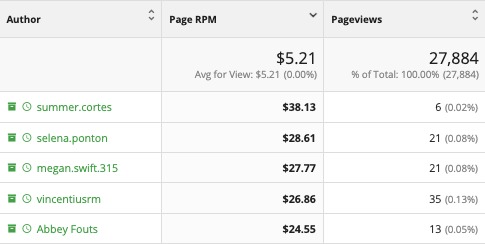
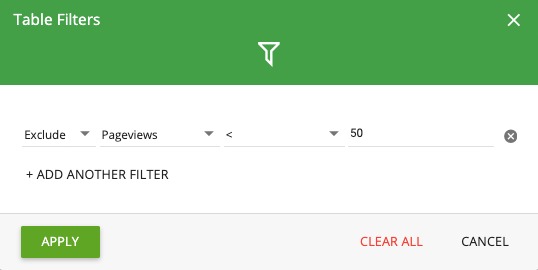
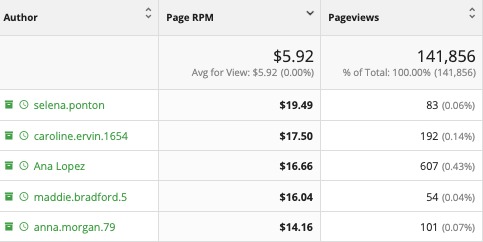
If you find yourself re-drawing the same reports multiple times, you can configure your filters and segments and then save it as a custom report to save time in the future.
Example of saving my above report to use again:
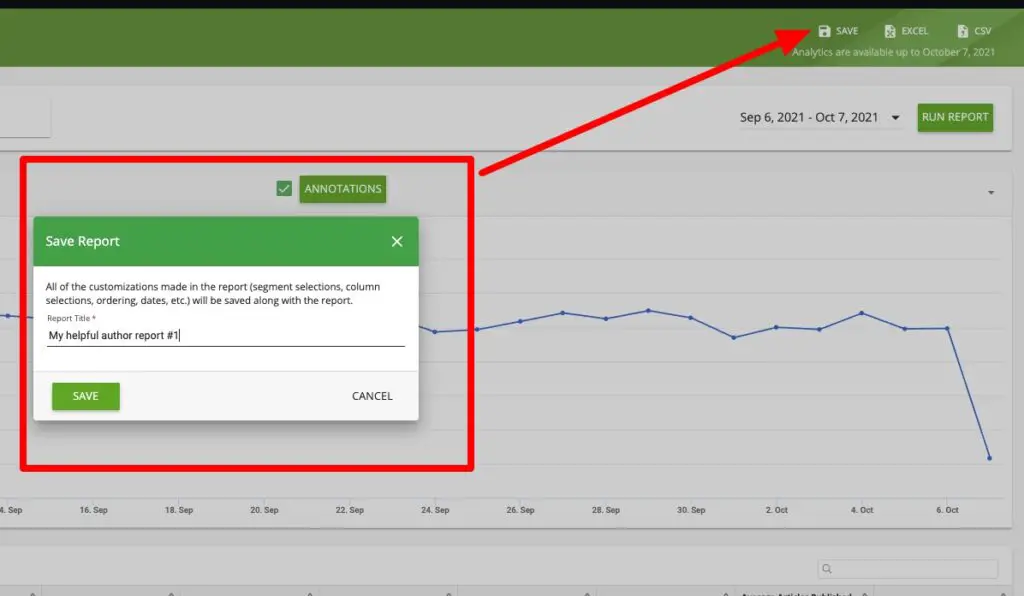
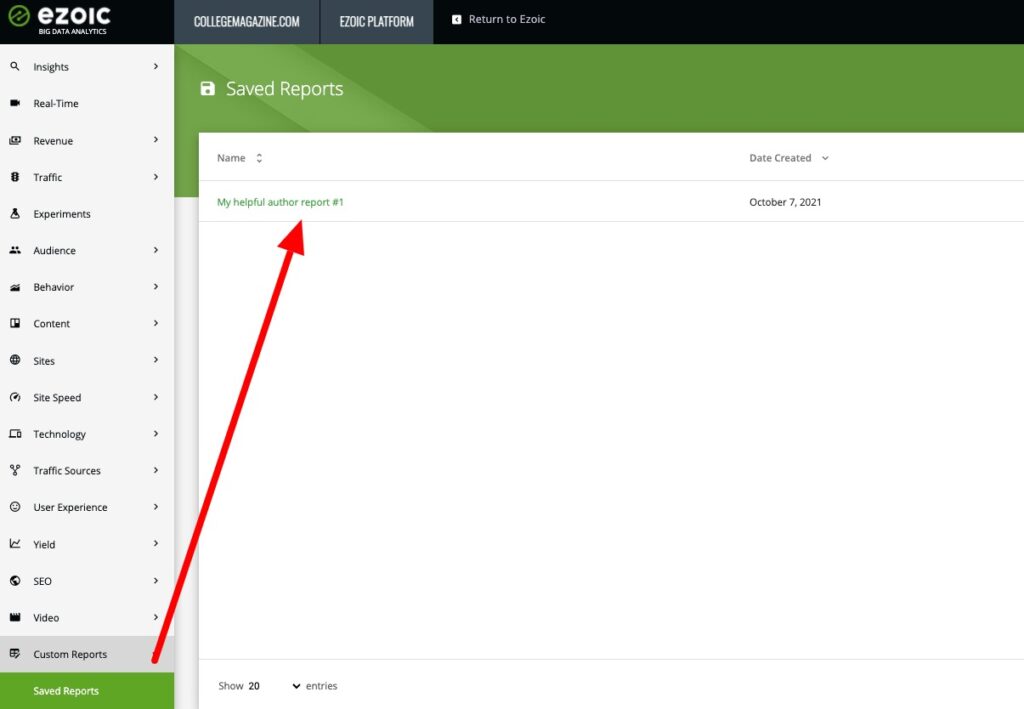
Common Ways Ezoic EPMV Can Be Fixed or Checked
Pages Without Revenue
There should be very few pages without revenue unless you’ve excluded certain pages, directories, etc. on your site.
Things To Look Out For:
- Pages with lots of pageviews, but no revenue
- An increase in pages without revenue when comparing periods (see above)
Top Causes:
- Pages were not detected as similar enough to other pages where placeholders were added and there are no placeholders on some of these pages.
- Solution: Go to these pages and add Ezoic ad placeholders (in many cases, they will have enough in common that it may only need to be done to one page for Ezoic to auto-detect and add to the other pages similarly affected)
- Objectionable Content filters have paused ads from showing on pages to prevent ad policy violations.
- Remove the objectionable content and follow these directions from Ezoic support.
Placeholder Changes
Often, sites may not know that Ezoic placeholders are not actual ad placements, they’re testing locations. This means that the data collected is used to test and improve EPMV over time; however, if placeholders change due to placeholder deletion or website changes (theme change etc.) that EPMV could be affected.
Is this what happened?
- Try the report and compare periods (see above) before and after you saw an EPMV change.
- The table would show a MUCH lower EPMV where marked if this was a factor in an overall EPMV decline
- You can then scroll down to see individual placeholders. Assuming the date range has allowed for adequate levels of traffic to pages with every placeholder, be on the lookout for placeholders with the most recent date marked as “0 impressions”
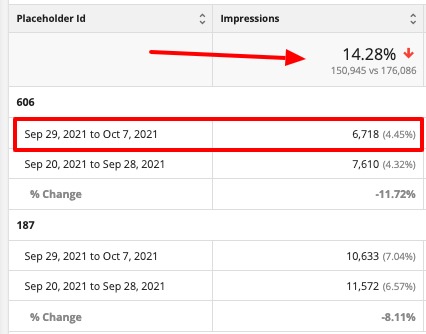
Top Causes:
- Placeholders were deleted
- Website theme or plugin changes removed placeholders
- Pages with certain placeholders stopped receiving traffic (see those traffic sources of those pages to see why that might be)
Hopefully, this article can serve as an interactive bookmark that any website owner can use to become better at using their data.
To improve EPMV one thing is universally true…
“NO DATA IS BETTER THAN THE DATA YOU HAVE ALREADY FROM YOUR OWN WEBSITE“
It’s true and if you dig in deep enough, I’m confident just about any website owner can double or triple their EPMV over time.

